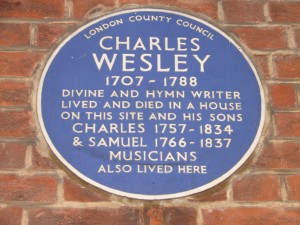Few songwriters have ever heard of “metrical lyric writing.” Yet this is a key tool for beginning songwriters — not only those who want to write modern hymns, arrange old hymns or even write contemporary Christian worship songs. This is for songwriters of all genres.
Have you ever heard a beginning songwriter’s song and thought “She’s cramming way too many words into those four bars of music” or “The melody of his verses seems to be the same but the lyrics in his second verse don’t fit like they do in the first verse”?
Are you that songwriter, sometimes?
Many songwriters compose the lyrics of their first verse in a fit of inspiration, together with the melody. But the second verse is more difficult, and they concentrate so hard on coming up with a rhyme for the end that they shove too many words in a tight space.
The masters of old hymns wrote their lyrics as poetry, with precise meter (think back to your English or Creative Writing class where you learned about the iambic pentameter of Shakespeare’s sonnets — all those ten-syllable lines). Each week churches sing hundreds of old songs, each with eight syllables on odd lines and six syllables on even lines. And they sing hundreds of songs where every line has eight syllables. And hundreds where every line has seven syllables. And so on. But the best songwriters of every century and genre know how to be metrically precise, too.
Read the first verse of John Lennon and Paul McCartney’s “You Won’t See Me,” which the Beatles recorded on Rubber Soul.
When I call you up your line’s engaged. (9 syllables)
I have had enough, so act your age, (9 again)
We have lost the time that was so hard to find, (11 syllables on this third line)
And I will lose my mind, (6 on the fourth)
If you won’t see me, you won’t see me. (9)
Compare these lines to the length of lines on their second verse:
I don’t know why you should want to hide, (9, same as on the first line of verse 1)
But I can’t get through; my hands are tied, (9, same as on the second line of verse 1)
I won’t want to stay I don’t have much to say, (11, same as on the third line of verse 1)
But I can turn away. (6, like the fourth line of verse 1)
And you won’t see me, you won’t see me. (9, like the final line of verse 1)
Now look at the first verse from a more recent song by Jeff Tweedy, on alt-country band Wilco’s Yankee Hotel Foxtrot album, “Heavy Metal Drummer”:
I sincerely miss those heavy metal bands (11 syllables)
I used to go see on the landing in the summer (13 syllables)
She fell in love with the drummer (8)
She fell in love with the drummer (8)
She fell in love (4)
and second verse:
Shiny, shiny pants and bleach-blond hair (9 syllables, close to the 11 of the first line in verse 1)
A double kick drum by the river in the summer (13, just like the second line of verse 1)
She fell in love with the drummer (8, identical)
Another and another (7, one fewer than the same line of verse 1)
She fell in love (4, identical)
Not quite as metrically precise as “You Won’t See Me” but still tight. Tweedy, Lennon and McCartney didn’t count syllables per line, but their ear for music led them to create symmetry in their lines. Many songwriters develop this “ear” or they are born with it. Even if you don’t have it, you can develop it by actively paying attention to syllables.
Let’s look at one more example. We’ll see how good contemporary praise & worship writers compose verses with metrical symmetry, even if they don’t count syllables and accents like Charles Wesley or John Newton did. Here is the first verse of Hillsong’s “Shout To The Lord” written by Darlene Zschech:
My Jesus, My Savior, (6 syllables)
Lord, there is none like You; (6 syllables)
All of my days, I want to praise (8 syllables)
the wonders of Your mighty love. (8 syllables)
and second verse:
My comfort, my shelter, (6 syllables, same as the first line of verse 1)
Tower of refuge and strength; (7 syllables, just one more than the second line of verse 1)
let every breath, all that I am (8 syllables, like on verse 1)
never cease to worship You. (7 syllables, one fewer than verse 1)
Countless thousands of Christian worshipers sing this song every Sunday. Even those who are new to the faith pick up the simple melody quickly. And when the worship team leads them to the second chorus, these new worshipers don’t get tripped up by unusual phrasing or lines that are crammed with too many or too few syllables. Their expectations, based on the first verse, don’t lead them astray because Zschech constructed her song well, within her framework.
Songwriting Exercise:
No matter what kind of songs you write, you will improve by forcing yourself to write “hymns” (even if they’re songs about your dog, or high school football games, or the horrors of war). Writing “hymn style” will instill disciple, teach word economy, and provide structure.
- Write the lyrics to three songs in Common Meter (86.86 – eight syllables on odd-numbered lines; six on even lines).
- Write three songs in Long Meter (88.88 — eight syllables on every line)
- Write two songs in Short Meter (66.86 — eight syllables on each third line; six syllables on every other line).
- Write two songs in 7777 meter (sevens on every line)
Write at least two verses per song using these meters. You can write unmetered choruses, pre-choruses and bridges, if you’d like.
Even if you never write in hymn meter again, if you do this exercise over the next few weeks, you will forever improve your sense of lyrical meter.
* Do you feel like sometimes you’re placing the wrong emPHAsis on the wrong syLAble? Read this post
* Want a free, printable glossary of hymn meter & form terms? Here it is.
You’ll notice that singer-songwriters often practice a more free form. This works when they want to create a highly stylized song just for them — lines that show their vocal inflections and cadence, and how cleverly they can wrap a long phrase around four bars of music. It will not work as well if you want other people to sing your songs.
Beatles artwork (top) by Luiz Fernando, used via Creative Commons license
Charles Wesley memorial photo by Simon Harriyott, used via Creative Commons license
“Pure Worship” photo by LoveFusion Photography, used via Creative Commons license



{ 1 trackback }